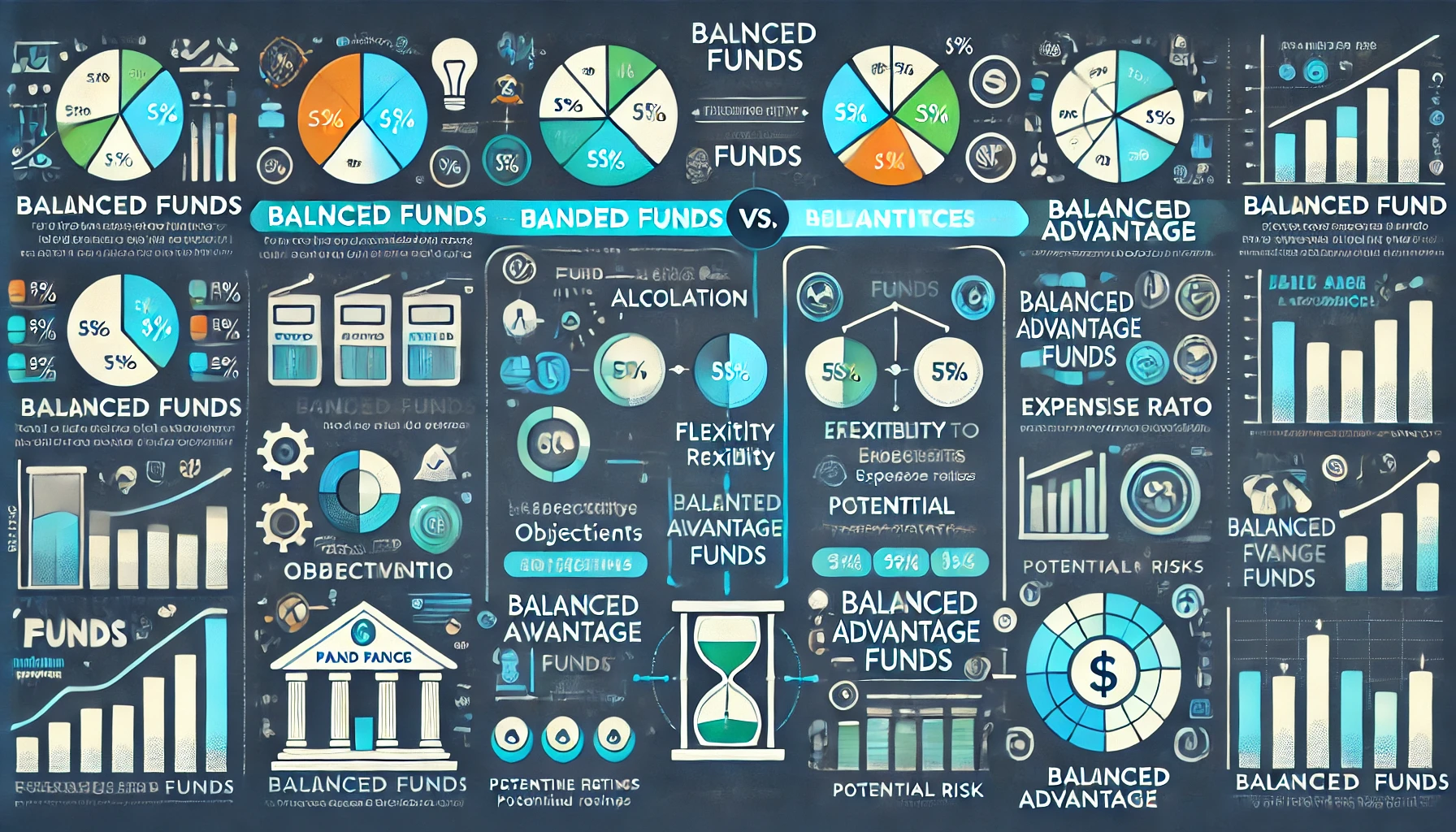Embarking on your investment journey requires making important decisions, and choosing the right mutual fund scheme is one of them. For new investors, navigating the wide variety of mutual fund options can feel daunting. Among these, the comparison between balanced funds and balanced advantage funds is a common consideration. Let’s explore these two types of funds and understand how they differ.
Before diving into the specifics of balanced and balanced advantage funds, it’s helpful to understand the three primary categories of mutual fund schemes:
- Equity Funds – These funds primarily invest in the equity shares of companies, offering the potential for high returns with higher risk.
- Debt Funds – These schemes focus on fixed-income instruments such as bonds and government securities, providing stability and lower risk.
- Hybrid Funds – These funds combine investments across multiple asset classes, such as equity and debt, to balance risk and reward.

What are Balanced Funds?
Balanced funds are a category of hybrid mutual funds that allocate investments across both equity and debt instruments. True to their name, these funds aim to maintain a balanced distribution of assets. Typically, they follow a 60%-40% allocation ratio, where 60% is directed toward one asset class, and the remaining 40% is divided between equity and debt.
While the allocation may vary, it is generally restricted to a 20% adjustment. This means the segment with 60% of the allocation can be reduced to a minimum of 40%, while the 40% portion can be increased to a maximum of 60%.
What are Balanced Advantage Funds?
Balanced advantage funds (BAFs), like balanced funds, belong to the hybrid mutual fund category, investing in both equity and debt. However, what sets BAFs apart is their flexibility in asset allocation, as there are no fixed limits on how funds are distributed. These funds are also known as dynamic asset allocation funds.
The dynamic nature of BAFs allows them to adjust investments based on market conditions. For instance, during market highs, the fund may reduce equity exposure and shift more towards debt to safeguard capital and maintain income generation during market downturns. While BAFs have the flexibility to allocate up to 100% of their assets to a single class, such extreme allocations are uncommon.
Comparative Analysis of Balanced Funds vs Balanced Advantage Funds
To better grasp the distinction between balanced funds and balanced advantage funds, let’s explore some of the key differences between these two types of mutual funds.
Fund Allocation
The primary difference between balanced funds and balanced advantage funds lies in their approach to asset allocation. Balanced funds follow a fixed 60%-40% investment ratio, with a maximum adjustment of 20% during rebalancing. In contrast, balanced advantage funds have no such restrictions, allowing them to allocate assets in any ratio. This makes BAFs significantly more flexible and dynamic in their investment strategies.
Risks
Both balanced funds and BAFs carry risks since they invest in equity and debt instruments. Equity investments are influenced by market performance, emphasizing the need for diversification. However, BAFs are better equipped to manage risk, as they can dynamically adjust their equity exposure based on market conditions. For example, BAFs can reduce equity investments during market downturns, whereas balanced funds lack this adaptability.
Returns
Returns are a critical factor in evaluating any investment. Balanced funds, with their fixed allocation ratios, may struggle to adapt to shifting market conditions, potentially limiting returns. On the other hand, BAFs, with their flexibility to adjust allocations, can generate higher returns in favorable markets while preserving capital during downturns.
Objectives
Both fund types aim to balance risk and reward, but their specific objectives differ. Balanced funds focus on delivering long-term growth and stability, while balanced advantage funds prioritize mitigating market volatility to achieve risk-adjusted returns.
Tax Implications
Tax treatment depends on the allocation of assets within the funds. Balanced funds are taxed as debt funds if their equity allocation falls below 65%. Conversely, BAFs can be taxed either as equity or debt funds, depending on their allocation. To benefit from equity-like tax treatment, many BAFs maintain at least 65% of their portfolio in equities.
Difference Between Balanced Funds and Balance Advantage Funds
Outlined below are the key differences between balanced funds and balanced advantage funds based on specific criteria:
| Parameters | Balanced Funds | Balanced Advantage Funds |
|---|---|---|
| Fund Allocation | Investments follow a fixed ratio of 60%-40%. | No fixed allocation ratio; funds can be dynamically allocated to asset classes. |
| Flexibility | Limited flexibility due to the fixed investment ratio. | Highly flexible, as asset allocation can change based on market conditions. |
| Expense Ratio | Lower expense ratio since asset allocation changes are minimal. | Higher expense ratio due to frequent and active rebalancing of assets. |
| Objectives | Focuses on delivering long-term growth and stability. | Aims to reduce the impact of market volatility and provide risk-adjusted returns. |
| Potential Returns | Offers steady returns, heavily influenced by market performance. | Has the potential for higher returns due to dynamic and adaptive investment strategies |
Keep reading and supporting thezipco!


